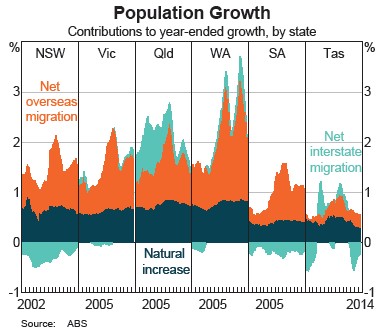Would you live in a funky floating apartment? It’s happening all over the world, and might help solve Melbourne’s housing crisis…
Floating homes are but one of a number of radical – and less confronting – ideas to fix one of Melbourne’s biggest problems; a lack of housing options. It’s a menacing situation that is already shackling our aging and rapidly growing population’s ability to enjoy life in our sprawling metropolis. In essence, we have too many dog-box apartments in the CBD, too many massive new homes on the fringes and too many single dwellings on quarter-acre blocks in the middle suburbs.
In recent years, what were supposed to be the city’s inviolable boundaries have blown out again and again, as politicians capitulate to pressure from developers and from young families who cannot afford to live close to the centre of the city. It is now 150 kilometres from the eastern boundary to the western one; further than from the CBD to Bendigo. It’s not working and will only get worse if we don’t make changes…
Of course, Short has failed to mention the elephant in the housing room: Melbourne’s rampant population growth, mostly via immigration. This has added never-ending insatiable demand for housing and, when added to the myriad of planning barriers, are necessarily the root cause of the many problems he himself has identified, namely: declining affordability and urban sprawl.
Disappointingly, when commentators confronted Short about ignoring the population ponzi, he brushed their views aside with the following:
I find it a little disappointing that many seem to see this as an immigration issue. It is not. It is about housing options for an evolving economy and society and population. A little more imagination and empathy would be helpful…
I do not think this is a problem particularly driven by immigration. Many studies show that immigration is a positive economically and socially. This is a problem caused by a lack of housing options. It is not hard to adjust our thinking a little. I find driving out along the Calder Freeway a little disappointing – people are heading out there to have space and a home, but are not getting what they deserve and could have in terms of amenity.
So according to Short, adding nearly an MCG-worth of people to Melbourne each year, mostly via immigration, causes little indigestion? Yet, at the same time, Melbourne’s expansion outwards in the face of this inexorable population growth is “not working and will only get worse”?
Talk about a bad case of cognitive dissonance.
Sure, planning in existing areas needs to be freed-up – no objections there. But expecting to achieve a more liveable and affordable city by restricting the urban footprint at the same time as Melbourne’s population surges towards 8 million is contradictory and mutually exclusive.


